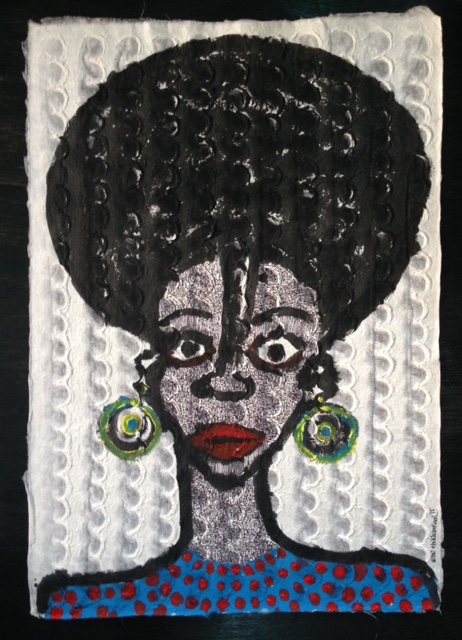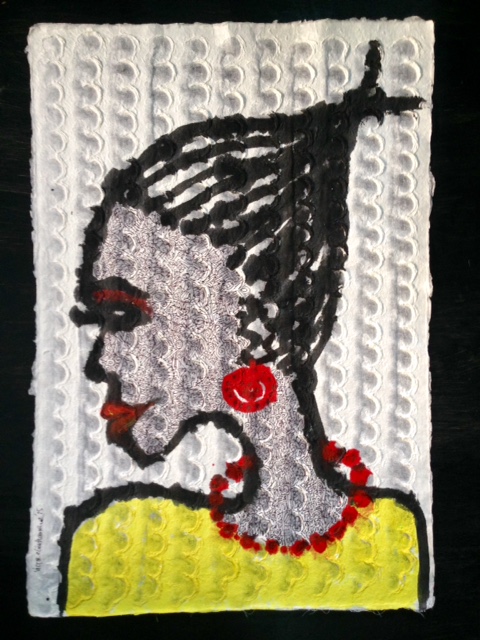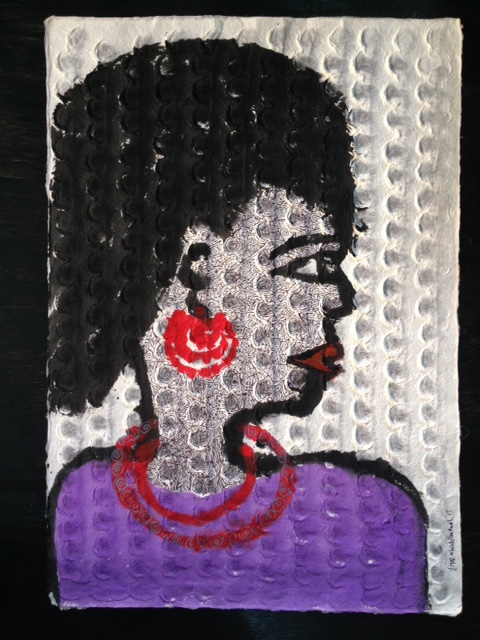
Victor Ehikhamenor grew up seeing symbolic paintings and drawings on shrine-walls in the village of his birth. Upon maturity, after he received a drawing book for school, he began to imitate the wall drawings on paper. Four decades later, some of those walls have crumbled; the artist retains, however, a copy of that drawing book. He carries it in his memory.
Emmanuel Iduma on recent drawings of Victor Ehikhamenor.
Glancing Subjects
On Recent Drawings by Victor Ehikhamenor
I look into the eye. Am I to believe that gazing back at me she sees nothing—my feet perhaps, parts of the room, a hazy circle of light, but at the centre, where I am, only a blur, a blank? I pass my hand slowly in front of her face, watching her pupils. I cannot discern any movement. She does not blink. But she smiles: “Why do you do that? Do you think I cannot see?” [J. M. Coetzee, Waiting for the Barbarians]
While making a portrait, the draughtsman considers the face of a subject. As soon as the face is in view the eye cannot be hidden. What makes the portrait mysterious is a subject’s ability to see without seeing herself being seen. Yet the endearing quality of a gaze is how it becomes, as soon as one stares long enough, a gift. Anyone who has looked at a portrait even briefly knows that at a certain moment it appears that the subject is looking back. This is the impact of a depicted eye. It sees, in return.
Secretary.
Three drawings by Victor Ehikhamenor, “Typist”, “Secretary” and “Special Personal Assistant”, depict faces of women. One face is frontal, two others are seen from the side. Outlined with charcoal, their faces are furnished with specific qualities. One face seems meek, the other curious, the third skeptical. It depends, you see, on the positioning of the eye. If the eye is tilted to the left, and the face tilts downward, the figure seems ponderous and meek, softening under scrutiny. If the eye is angled to the right, and the large eyes are only partly seen, the figure is manifest as bossy and knowing. And if the figure is seen directly, the giant eyes and the lips slightly pouted are of intense curiosity, as if the seen world is scurrying past.
Ehikhamenor’s drawings tenuously balance figuration with abstraction. The outlines of the figure in “Questions Directed At A Mirror” serve as a frame for lines that seem at once deliberate and superfluent, a technique used in the three aforementioned portraits. These figures, in turn, serve as placeholders for an intricacy not immediately apparent. They are like blurs and hidden intricacies in one’s vision, yet present.
Special Personal Assistant.
Portraiture is ontologically bound with the portrayed—there is no depiction without the one who is depicted. Who do these female figures represent for the artist? I receive their gazes with great interest, and this comes with the conviction that there is a giver behind the gift. Yet a drawing cannot be given in the same way as a photographic portrait. The face in a photograph, for instance, is an exact preservation of the identity of a person who lives, or who is known to have lived. It is a keepsake from a moment when an eye flickered, a face twitched, or a mouth opened in a smile. But a drawing is less exact, more inventive, as though it captures the identity of a person in an uncertain, roundabout way.
The young barbarian girl in J.M. Coetzee’s Waiting for the Barbarians has lost most of her sense of sight. She sees things as blotches and blurs. In the passage above, the narrator implies his frustration with her way of seeing. “Am I to believe that gazing back at me she sees nothing—my feet perhaps, parts of the room, a hazy circle of light, but at the centre, where I am, only a blur, a blank?” The girl, however, confirms that she sees the slow movement of his hands across her face. In the way she sees, things or people are less certain or hardly identifiable. Yet they are present.
“Typist”, “Secretary,” “Special Personal Assistant”– all titles allude to official appellations of office workers who work with paper. The material and the subjects are held in dialogue. The material, in Ehikhamenor’s hands, mirrors the identities of women whose clerical training might make them second-place to a privileged male boss. Many of such women spend an entire career at the service of bureaus, filling hours as incalculable as an endless bundle of shredded paper trashed by a government office.
Typist.
Paper, one could say, is bound to impermanence. It crumples, crumbles, burns, turns into shreds, breaks into fragments. But it is also bound to permanence. Victor Ehikhamenor grew up seeing symbolic paintings and drawings on shrine-walls in the village of his birth. Upon maturity, after he received a drawing book for school, he began to imitate the wall drawings on paper. Four decades later, some of those walls have crumbled; the artist retains, however, a copy of that drawing book. He carries it in his memory.
Emmanuel Iduma is a writer and art critic.
All works courtesy the artist.



